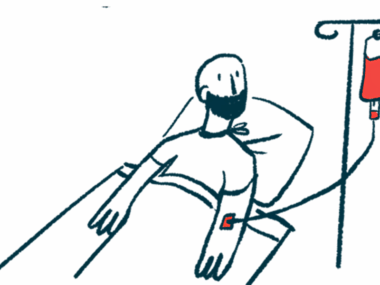Price of Soliris Far Too High, as Efgartigimod’s Likely Will Be: ICER
Written by |
The Institute for Clinical and Economic Review (ICER), an independent nonprofit that evaluates the prices and benefits of medications in the U.S., reported on the efficacy and cost-effectiveness of Soliris (eculizumab) and efgartigimod.
Its report found reasonable evidence that adding either of these medications to conventional care could ease symptoms of generalized myasthenia gravis (gMG).
But the price of Soliris would need to come down by at least 97% for the medication to be cost-effective, ICER estimated. The report also highlighted uncertainties with the use of both medications.
“Efgartigimod’s price is not yet known, but our analysis suggests that the current list price for [Soliris] is far higher than the usual thresholds for cost-effectiveness,” Foluso Agboola, MD, vice president of research at ICER, said in a press release.
Developed by Alexion Pharmaceuticals (now part of AstraZeneca), Soliris has been approved to treat gMG in the U.S. and Europe since 2017. Efgartigimod, an investigational therapy for gMG being developed by Argenx, is now under review for possible approval in the U.S. and in Europe.
The two medications work through different biological mechanisms, though both broadly aim to reduce the self-targeting immune attack that causes MG. Both have also shown effectiveness at easing gMG symptoms in Phase 3 trials — ADAPT (NCT03669588) in the case of efgartigimod, and the REGAIN trial (NCT01997229) in the case of Soliris.
ICER’s report, based on data from ADAPT and REGAIN, concluded that “both [Soliris] and efgartigimod significantly improve function and quality of life for patients with gMG.”
However, it also noted that both medications “share many uncertainties.”
As an example, if or when treatment with these medicines should be stopped in patients who are responding or recently ceased responding to them is still unclear, the report noted. Additionally, it is not yet clear how efgartigimod should be dosed, as second-cycle dosing in ADAPT was based on when patients stopped benefiting from treatment.
“It seems likely that in routine practice, patients and clinicians will not want to wait until the benefits have receded before starting another round of therapy,” the report stated.
“While our review of available evidence suggests that both [Soliris] and efgartigimod appear to significantly improve function and quality of life for these patients, there are uncertainties about longer-term outcomes for efgartigimod and how it will be dosed in real-world settings,” Agboola said.
In REGAIN, Soliris was tested specifically in gMG patients who were refractory, or failed to respond, to conventional therapies. However, its FDA label does not specify limiting Soliris’ use to this specific patient population.
While analyses found evidence of effectiveness for both Soliris and efgartigimod, there was not enough evidence to say whether one was more effective than the other, or to compare their efficacy with other MG treatments, namely intravenous immunoglobulin (IVIG) and rituximab.
The report also estimated the cost-effectiveness of the two therapies — essentially, the amount of benefit that they are expected to provide when taking cost into account.
Results suggested that Soliris would be cost-effective if priced at about $13,200–$19,400 a year, corresponding to a 97% to 98% reduction from its estimated current price, which is about $653,100 a year.
Efgartigimod was thought to be cost-effective if priced at $18,300–$28,400 per year. Its annual cost is unknown as this medication is not yet approved, but estimates place it at around $418,100 a year.
“Manufacturers should set prices that will foster affordability and good access for all patients by aligning prices with the patient-centered therapeutic value of their treatments,” the report stated. “In the setting of these new interventions for gMG, there remains substantial uncertainty regarding their longer-term safety and effectiveness. Manufacturer pricing should reflect these considerations in more moderate launch pricing.”
ICER also stressed that treatments for gMG are likely to provide benefits not directly reflected in a purely economic model. For example, these treatments may “improve childbearing and career opportunities” for women with gMG who wish to become pregnant, the report noted.
“This is particularly relevant for Black women who typically present at younger ages and may have a more severe disease course than other patient groups,” it stated.
“It’s important to monitor these treatments’ effectiveness in minority populations to develop a complete picture of their overall efficacy,” Agboola said.







Leave a comment
Fill in the required fields to post. Your email address will not be published.